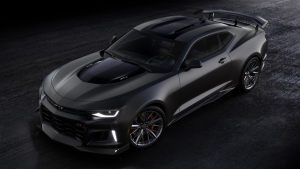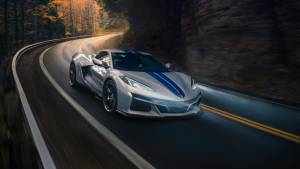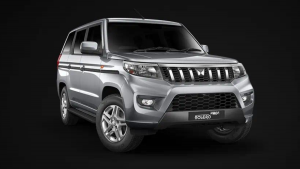2013 Chevrolet Sail U-VA in India road test
-590px.jpg)
Chevrolet. The name means so many things for me. The bowtie. The bowtie and a chequered flag. They've both adorned some of the cars that make me stop in my tracks and get lost in a world of big block V8s and thundering exhaust notes. Everything that starts with the letter 'C' and ends with 'amaro' or 'hevelle' has the power to get me down on my knees and crying. So it is no surprise that I have had a certain soft spot for everything adorned with a golden bowtie, be it the underpowered SR-V or the boxy Tavera. But as time went on and I realised that the era of muscle and understeer will never come back no matter how badly I wanted it. And I started to pay less and less attention to the brand. Until the Beat came along with its funky styling and Hollywood star power. But that was a while ago and now there is a new kid on the block. It is supposed to take over from where the U-VA left off. I've never been a big fan of the U-VA. If you ask me it never had a very likable face. This new car at least has a better face. But can it force me to take Chevy a bit more seriously?
Design
As I said before, I was never a big fan of the way the U-VA looked. I'm fairly certain that the guys who man the design desk at GM are capable of some really eye catching designs. Just look at the Beat and the new Sonic for example. Quite frankly, everyone at OVERDRIVE was expecting something like the Sonic to make an entry from GM's stable. Instead we got the Sail. Let me make one thing clear though. The Sail is not a bad looking car. But the problem is that it would have been a good looking car several years ago. But right now it just looks dated. Even the signature split grille looks a generation older. But that being the case, the front end is not bad looking. The swept back headlamps and the sculpted bumper come together to make for a smart looking front end. The side profile has kind of an MPV stance going. The excessive sheet metal and the lack of character lines make it just plain boring. There really isn't much more to say about this. And that is the case for the rear as well. Look at it long enough and another American car will come to mind. The dimensions, tail lamp position and the overall shape look a lot like the Ford Fusion. But like the front end, the rear too is not bad looking.
This feeling of being 'not bad' is carried over to the inside as well. The entire cabin is bathed in a beige and grey tinge and as a whole is quite smart looking. But there are niggles. The steering wheel looks like a very blatant attempt at cost cutting. The materials are not even close to premium and there isn't even a golden bowtie on it. Instead the Sail makes do with just an embossed logo. Since we're talking about the wheel, I should also tell you that the placement of the horn is a real annoyance. You can get it to work only if you press the two small marked areas on either side of the wheel. Also the seating position is quite weird. I could never find a comfortable position to drive in. If the pedals were at the right distance, the wheel would be in my face. There are panel gaps too. Especially between the steering column and the dashboard. Also, the car doesn't even have a button to unlock the doors. It makes do with a Maruti 800-esque knob next to the window.
But where the car does impress is with space. The rear max knee room of 870mm is only 24mm short of the Jazz which we consider the benchmark as far as space goes. And at 1220mm, the shoulder room is 52mm less than the Honda, which isn't bad. However, we do feel that with a little bit of redesign, even more room could've been liberated. For example, the dashboard is so huge that it eats into the space in front unnecessarily. And it doesn't even have any storage spaces in it other than the usual glove box and a little cubbyhole under the stereo. But what does have extra storage is the rear seat. Unlike other cars, the Sail offers a fair bit of storage under the rear bench. Thumbs up from us.
Dynamics
The last car that bore the name Sail from GM was well known for its handling. Like the Opel, the new Sail too uses McPherson struts up front and a torsion beam at the rear. But unlike the Corsa this is not a car that you would want to drive very spiritedly. Why? The blame is on a lot of factors. But the biggest factor is the steering. The steering feels vague and offers absolutely no feedback. There is also a lot of play. So much that while testing the car we could turn the wheel up to 30 degrees side to side without having the car change direction. Another problem is that the front and rear of the car feels disjointed. Make a high speed correction and you can feel the front change direction but the rear will follow suit after a few moments' hesitation. There is a lot of body roll too. Ride quality however is fairly decent. There is a lot of suspension and road noise but none of the bumps and jumps are transferred to the occupants directly.
What we did like about the car's handling is when we needed to stop, it surprised us immensely. We were expecting it to be much worse than the competition. Turns out, the disc/drum brakes and the 175/70 R14 tyres do a good job of bringing the car to a halt. So much that the 100-0kmph test was disposed off in 43.47m and 43.53m respectively by the petrol and diesel variants.
Drivetrain
Let's get the numbers and facts out of the way. The Sail U-VA uses 1199cc, S-Tec II, petrol engine (similar to the unit in the Beat) making 88PS at 6000rpm and 113Nm at 5000rpm as well as a 1248cc making 78PS at 4000rpm and 205Nm at 1750rpm. One of the issues we had with the petrol engine is that there was a lack of low down torque. I agree that low down torque is not a strong point for petrol engines. But I've driven enough petrol engines to tell you that any car that threatens to stall on inclines is seriously lacking low end whack. And it is not just low down that the performance is lacking. Even when you have the engine spinning away to glory it does not communicate a sense of urgency until you pass 3000rpm. And even if you do pass the 3000rpm mark, there aren't any fireworks waiting for you. The car will do 0-100kmph in 13.55s which is good when compared to the competition (Brio 12.85s, i20 13.36s, Swift 12.93s). Keep the throttle mashed and you will eventually see a top whack of 158kmph. The 5-speed gearbox however is a big let down. For every 100 shifts there will be at least 10 mis-shifts.
The gears just refuse to fall in place unless you let the lever sit in neutral for a second. Thankfully though the mileage is pretty good. The car manages to give 12.9kmpl in the city and 18.9kmpl on the highway averaging a decent 14.4kmpl.
The diesel Smartech motor is the keeper among the two. It is derived from Fiat's Multijet engine and has none of the low down torquey issues that the petrol variant has. It's refined and pulls cleanly from standstill and posts a 0-100 time of 16.16s and a top speed of 163.08kmph. The multijet as always is quite torquey and this can be seen from the in gear acceleration figures. 20-80kmph in second gear is done in 13.08s (15.16s for the petrol), 40-100kmph in fourth gear is dismissed in 14.50s (22.88s) and 40-100kmph in fifth gear comes around in 24.38s (32.23s). Just by looking at the figures you can see the phenomenal difference in both. The gearbox in the diesel too is far better and gives better shifts without any of the mischief that the petrol has. All this while delivering 15.8kmpl in the city, 21.6kmpl on the highway and an overall efficiency of 17.25kmpl.
Verdict
So the Sail U-VA starts at Rs 4.65 lakh for the basic petrol and Rs 6.16 lakh for the diesel basic (ex-Mumbai). The top end models will cost you Rs 5.85 lakh and Rs 6.94 lakh for the petrol and diesel with the difference in basic and top-end being just optional ABS, a built in stereo and other knick knacks like bluetooth and rear windscreen wash/wipe. The price makes it cheaper than most other cars in the segment, save a few like the Brio (Rs 4.34 lakh for the basic). Problem however is that the Sail-UVA doesn't look as contemporary as even some of its siblings (read Beat). It doesn't set your pants on fire with its handling. It doesn't even impress with its performance. All it does is offer better than average space for its occupants. So what do we have to say in closing? It's quite simple really. By not bringing in an all new model to keep their momentum going, GM has lost out on a huge opportunity. Agreed, the car is not bad. But that is also where the Sail U-VA's curse lies. It is only 'not bad'. In the face of such stiff competition, in one of the most ruthlessly competitive segments in India, the Sail just does not have enough aces up its sleeve to put up a serious fight. And merely offering lots of space for occupants will not suffice when it comes to Indians and their unquenchable thirst for VFM. For the sake of Chevy, we do hope the Sail does well. Maybe another starring role in a Hollywood flick is what the Sail will need. Who knows?
Starts Rs 4.79 Lakhs
1199cc
Manual
75
108.5
18.2 Kmpl
Starts Rs 6.18 Lakhs
1248cc
Manual
75
190
22.1 Kmpl
Related Stories
Top Stories
Latest Videos
Most Popular
Network18 Updates














